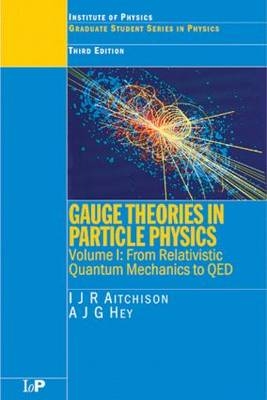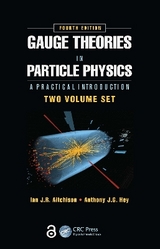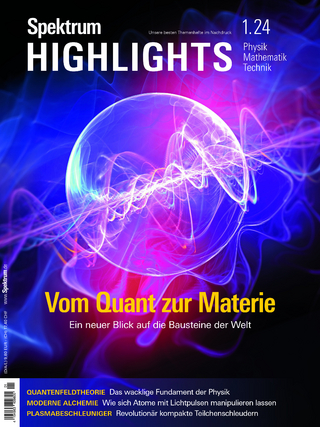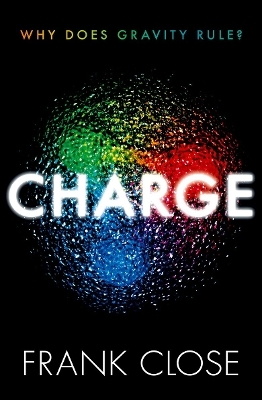
Gauge Theories in Particle Physics, Third Edition - 2 volume set
Institute of Physics Publishing (Verlag)
978-0-7503-0982-0 (ISBN)
- Titel erscheint in neuer Auflage
- Artikel merken
This two-volume set provides an accessible, practical, and comprehensive introduction to the three gauge theories of the standard model of particle physics: quantum electrodynamics (QED), quantum chromodynamics (QCD), and the electroweak theory. For each of them, the authors provide a thorough discussion of the main conceptual points, a detailed exposition of many practical calculations of physical quantities, and a comparison of these quantitative predictions with experimental results.
For this third edition, much has been rewritten to reflect developments over the last decade, both in the curricula of university courses and in particle physics research. On the one hand, substantial new material has been introduced that is intended for use in undergraduate physics courses. New introductory chapters provide a precise historical account of the properties of quarks and leptons and a qualitative overview of the quantum field description of their interactions, at a level appropriate to third year courses. The chapter on relativistic quantum mechanics has been enlarged and is supplemented by additional sections on scattering theory and Green functions, in a form appropriate to fourth-year courses.
On the other hand, since precision experiments now test the theories beyond lowest order in perturbation theory, an understanding of the data requires a more sophisticated knowledge of quantum field theory, including ideas of renormalization. The treatment of quantum field theory has therefore been considerably extended to provide a uniquely accessible and self-contained introduction to quantum field dynamics as described by Feynman graphs. The level is suitable for advanced fourth-year undergraduates and first-year graduates.
These developments are all contained in the first volume, which ends with a discussion of higher order corrections in QED. The second volume is devoted to the non-Abelian gauge theories of QCD and the electroweak theory. As in the first two editions, emphasis is placed throughout on developing realistic calculations from a secure physical and conceptual basis.
VOLUME I
INTRODUCTORY SURVEY, ELECTROMAGNETISM AS A GAUGE THEORY, AND RELATIVISTIC QUANTUM MECHANICS
Quarks and Leptons
Particle Interactions in the Standard Mode
Electromagnetism as a Gauge Theory
Relativistic Quantum Mechanics
INTRODUCTION TO QUANTUM FIELD THEORY
Quantum Field Theory I
Quantum Field Theory II: Interacting Scalar Fields
Quantum Field Theory III: Complex Scalar Fields, Dirac and Maxwell Fields; Introduction of Electromagnetism
TREE-LEVEL APPLICATIONS IN QED
Elementary Processes in Scalara and Spinor Electrodynamics
Deep Inelastic Electron-Nucleon Scattering and the Quark Parton Model
LOOPS AND RENORMALIZATION
Higher Order Processes and Renormalisation I: The ABC Theory
Loops and Renormalization II: QED
APPENDIX A: Non-Relativistic Quantum Mechanics
APPENDIX B: Natural Units
APPENDIX C: Maxwell's Equations: Choice of Units
APPENDIX D: Special Relativity: Invariance and Covariance
APPENDIX E: Dirac Delta-Function
APPENDIX F: Contour Integration
APPENDIX G: Green Functions
APPENDIX H: Elements of Non-Relativistic Scattering Theory
APPENDIX I: The Schrödinger and Heisenberg Pictures
APPENDIX J: Dirac Algebra and Trace Identities
APPENDIX K: Example of a Cross Section Calculation
APPENDIX L: Feynman Rules for Tree Graphs in QED
REFERENCES
INDEX
VOLUME II
NON-ABELIAN SYMMETRIES
Global Non-Abelian Symmetries
Local Non-Abelian (Gauge) Symmetries
QCD AND THE RENORMALIZATION GROUP
QCD I: Introduction and Tree-Graph Predictions
QCD II: Asymptotic Freedom, the Renormalization Group, and Scaling Violations in Deep Inelastic Scattering
Lattice Field Theory and the Renormalization Group Revisited
SPONTANEOUSLY BROKEN SYMMETRY
Spontaneously Broken Global Symmetry
Chiral Symmetry Breaking
Spontaneously Broken Local Symmetry
WEAK INTERACTIONS AND THE ELECTROWEAK THEORY
Introduction to the Phenomenology of Weak Interactions
Difficulties with the Current-Current and "Naïve" Intermediate Vector Boson Models
The Glashow-Salam-Weinberg Gauge Theory of Electroweak Interactions
APPENDIX M: Group Theory
APPENDIX N: Dimensional Regularization
APPENDIX O: Grassmann Variables
APPENDIX P: Majorana Fermions
APPENDIX Q: Feynman Rules for Tree Graphs in QCD and the Electroweak Theory
REFERENCES
INDEX
| Erscheint lt. Verlag | 1.1.2004 |
|---|---|
| Verlagsort | London |
| Sprache | englisch |
| Maße | 156 x 235 mm |
| Gewicht | 1270 g |
| Themenwelt | Naturwissenschaften ► Physik / Astronomie ► Hochenergiephysik / Teilchenphysik |
| ISBN-10 | 0-7503-0982-2 / 0750309822 |
| ISBN-13 | 978-0-7503-0982-0 / 9780750309820 |
| Zustand | Neuware |
| Haben Sie eine Frage zum Produkt? |
aus dem Bereich



